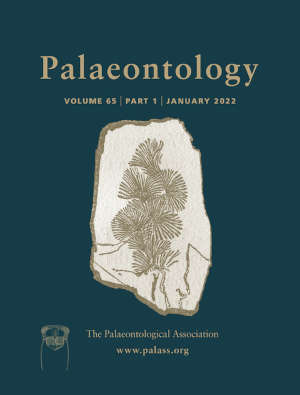Article: Morphological disparity trends in Devonian trilobites from North Africa
Publication: Palaeontology
Volume:
65
Part:
5
Publication Date:
2022
Article number:
e12623
Author(s):
Valentin Bault, Catherine Crônier, and Claude Monnet
Abstract
Abstract The Devonian was a time of drastic environmental change that shaped the morphology of trilobites. This study aims to investigate their morphological evolution and to show the influence of some abiotic and biotic factors (bathymetry, feeding habits and visual abilities) on their shape. A dataset was compiled to investigate the shape of three structures (cephalon as a whole, central part of the cephalon, and pygidium) of Devonian trilobites from North Africa, using a geometric morphometric approach. Based on empirical morphospaces, the morphological changes were quantified through the Devonian stages. The results reveal important variations in the morphological disparity of the glabella shape, the facial suture location, the pygidial length and the presence of spines. In the Lochkovian, morphological disparity was low, subsequently increased in the Pragian with numerous innovations, and reached a maximum in the Emsian. If the morphospace occupancy remained until the Eifelian, a severe loss of disparity occurred in the Givetian, a time known for important environmental changes. Disparity then remained low in the Late Devonian. The shapes inherited from the Silurian persisted throughout the Devonian whereas Pragian novelties were most affected by losses. These persistent shapes were more versatile for environmental adaptation, helping those trilobites to survive the environmental events. Similarly, the trilobite orders that survived Devonian events had a wide morphological spectrum and were better adapted to withstand environmental change.
